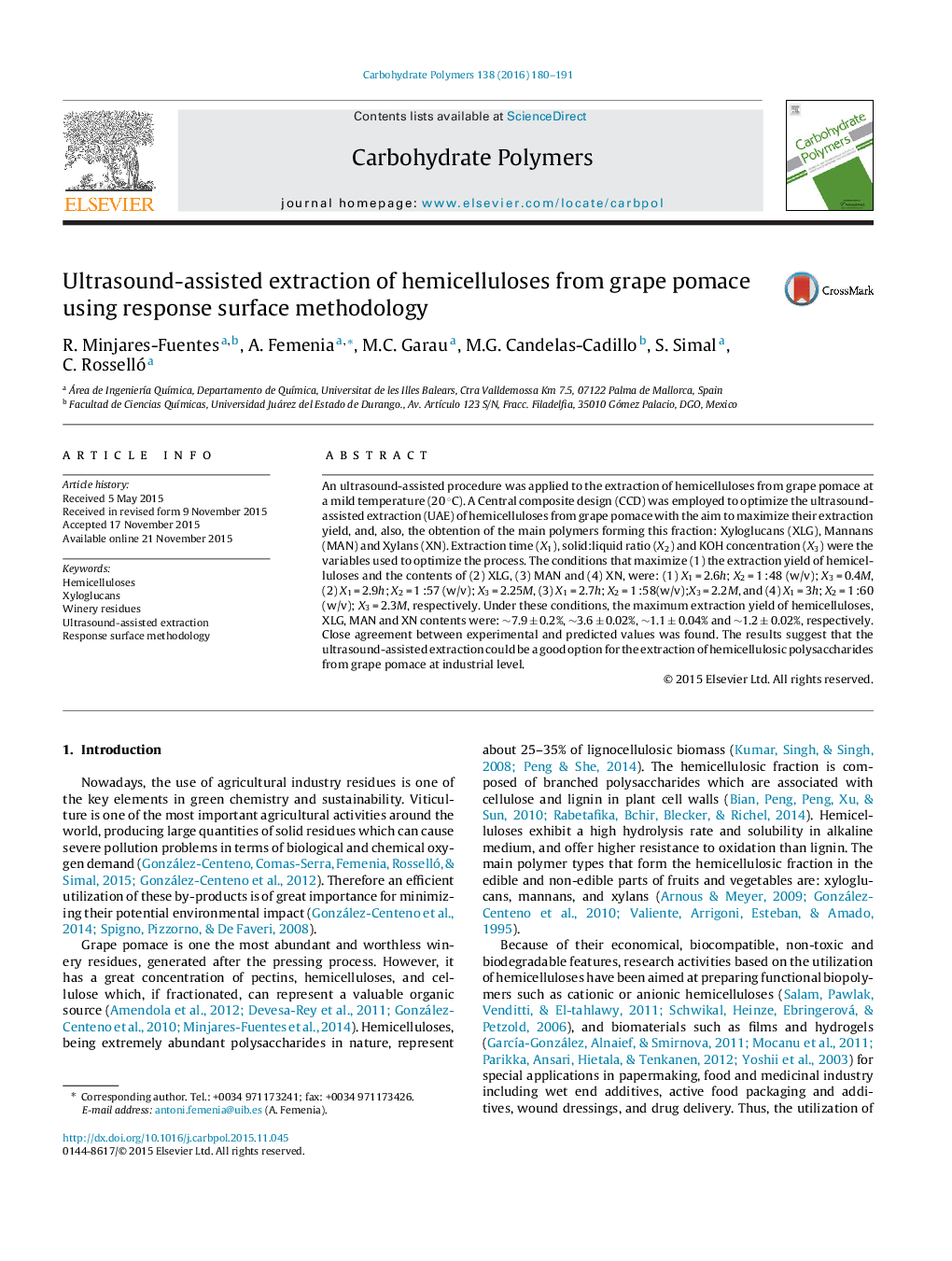| Article ID | Journal | Published Year | Pages | File Type |
|---|---|---|---|---|
| 1385091 | Carbohydrate Polymers | 2016 | 12 Pages |
•Hemicelluloses were extracted from grape pomace with ultrasound assistance.•Extraction time, ratio solid:liquid and KOH concentration were the process variables.•Extraction yield and the contents of Xyloglucans, Mannans and Xylans were evaluated.•Extraction procedures were optimized by the response surface methodology technique.
An ultrasound-assisted procedure was applied to the extraction of hemicelluloses from grape pomace at a mild temperature (20 °C). A Central composite design (CCD) was employed to optimize the ultrasound-assisted extraction (UAE) of hemicelluloses from grape pomace with the aim to maximize their extraction yield, and, also, the obtention of the main polymers forming this fraction: Xyloglucans (XLG), Mannans (MAN) and Xylans (XN). Extraction time (X1), solid:liquid ratio (X2) and KOH concentration (X3) were the variables used to optimize the process. The conditions that maximize (1) the extraction yield of hemicelluloses and the contents of (2) XLG, (3) MAN and (4) XN, were: (1) X1 = 2.6h; X2 = 1 :48 (w/v); X3 = 0.4M, (2) X1 = 2.9h; X2 = 1 :57 (w/v); X3 = 2.25M, (3) X1 = 2.7h; X2 = 1 :58(w/v);X3 = 2.2M, and (4) X1 = 3h; X2 = 1 :60 (w/v); X3 = 2.3M, respectively. Under these conditions, the maximum extraction yield of hemicelluloses, XLG, MAN and XN contents were: ∼7.9 ± 0.2%, ∼3.6 ± 0.02%, ∼1.1 ± 0.04% and ∼1.2 ± 0.02%, respectively. Close agreement between experimental and predicted values was found. The results suggest that the ultrasound-assisted extraction could be a good option for the extraction of hemicellulosic polysaccharides from grape pomace at industrial level.
